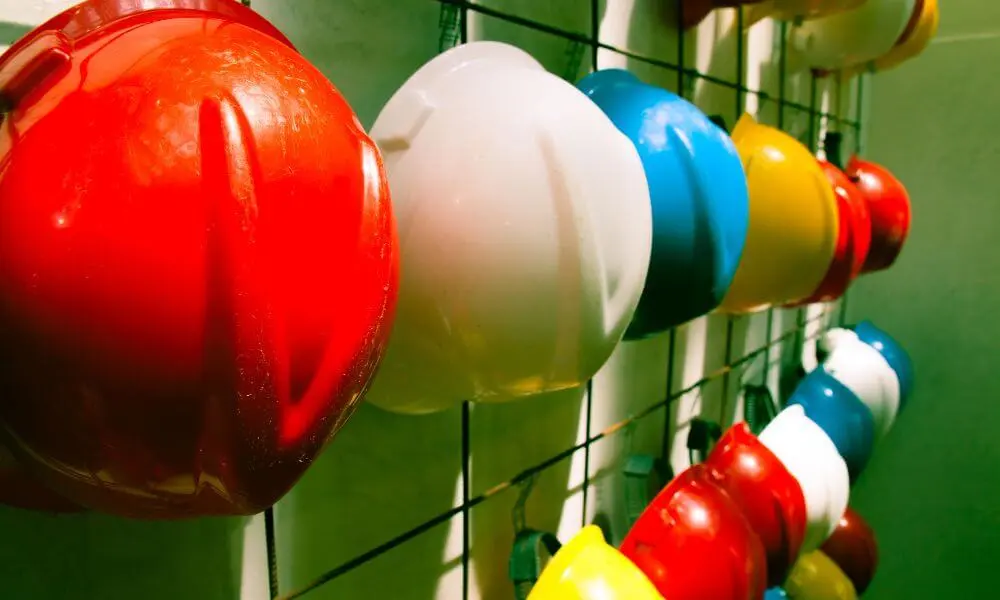Hard hat color codes and their meanings are essential to workplace safety and communication because they function as a dynamic language in dangerous circumstances. As essential pieces of personal protection equipment (PPE), these hats protect the wearer’s head from potential hazards found in industrial plants, mining sites, and construction sites. They act as visible markers, disseminating important details about the wearer’s particular duties and role. These hard hats, identify positions by color, improve safety procedures, promote effective communication, and guarantee a smooth operation where each team member is quickly and readily recognized.
Essential pieces of personal protective equipment (PPE), and hats protect the wearer’s head from more than only falling objects and other dangers. They serve as lighthouses, transmitting important details about the duties, experience, and role of the wearer. Color coding can identify individuals quickly and easily, such as identifying an electrical worker or site manager.
We’re going to explore the world of hard hat color codes in this blog post. We’ll dissect their connotations, consider their importance, and shed light on the reasons behind the industries’ preference for particular hues. Consider a yellow hard hat: it typically denotes a general laborer, whereas site supervisors typically wear white ones. However, these hues are more complex than they first appear.
Knowing these hues is fascinating in addition to being useful, regardless of your experience level in construction, familiarity with industrial settings, or even level of curiosity. Come along as we interpret these chromatic signals and learn how, amid the chaos of a bustling workplace, a seemingly insignificant color decision may convey a great deal about roles, responsibilities, and safety.
The Concept Behind The Color Codes for Hard Hats
Imagine walking into a busy construction site where every color of the hats tells a story and is an important component of a bigger safety tale. This is the realm of hard hats color codes; they are more than just a rainbow of hues; they are a tactical instrument for effectiveness and safety.
Think of the electricians, for example. Wearing vivid orange hard hats, they radiate light and make it obvious that this is their work area and that everybody else should stay away. This visual indication acts as a silent watchdog, averting mishaps and preserving efficient operations. Other hues, such as red for the expert welders, blue for the careful electricians, and green for the hardworking general workers, also vividly depict duties and responsibilities. Every hue fits into a carefully planned jigsaw, making sure that everyone is aware of their role and responsibilities.
However, it goes beyond simply defining jobs. Throughout the website, these color codes create a safety net. Imagine a fresh employee figuring out this tangle of activities. He recognizes the pattern of this intricate dance with a quick glance at the sea of colorful hats, understanding when to step safely and when to exercise caution.
This straightforward color-coding scheme has a significant impact. It is not hyperbole to argue that these regulations improve efficiency and save lives in addition to being incredibly organized. Hard hats play a vital role in the site’s safety protocol by serving as more than just protective clothing.
Hard hat color codes are more than simply decorative elements on a building site; they are essential parts of the machinery that maintain safety and order and stabilize the work rhythm.
Why Are Hard Hats Important?
The hard hat is a necessary defender in dangerous work situations, made of resistant materials such as industrial-grade plastic or metal. It’s not just a hat; it’s a life-saving gear intended to guard against brain trauma. It comes with a suspension system that expertly absorbs and distributes impact, protecting the head and neck.
Many hard hats include a face shield or visor, which protects the eyes from flying debris. This characteristic is particularly important in situations where airborne particles provide a persistent hazard.
Consider the hard hat the unsung champion of occupational safety. It’s more than just an accessory; it’s a critical piece of protective gear for staying safe in high-risk areas. A well-equipped hard hat is a constant protector for workers who face daily hazards.
Hard Hat Color Codes And Their Meanings
Hard hat color codes and their meanings can have different connotations depending on the area, business, or sector. However, the industrial and construction industries frequently adhere to a few general rules. Remember that these standards might not apply to all workplaces or organizations, so it’s important to find out what they mean specifically from yours.
The following list of popular hard hat color codes is accompanied by a typical explanation:
1. White Hard Hat

It is easy to spot white hard hats on construction sites. Wearing them as a symbol of power, site managers, foremen, engineers, and supervisors do more than just wear them as part of their uniform. In addition to being a utilitarian item that helps keep the user cool in the scorching weather, their striking white appearance conveys leadership.
In the middle of the chaos at the site, these white hats are easily identifiable and direct workers to the right people. White hard hats are more than just safety gear; they are an essential part of order and safety, representing both a practical necessity and a duty.
2. Yellow Hard Hat

Beyond its role as safety equipment, the yellow hard hat represents the busy world of physical labor in the fast-paced construction industry. These bright yellow hats are a sign of hard work in progress, frequently seen on top of people working heavy machinery, digging trenches, or performing other physical jobs.
Wearing a yellow hard hat serves as a warning to others in addition to being safe. It identifies the wearer as an essential component of the building process, deeply engaged in activities that demand concentration and shouldn’t be disturbed. In addition to providing excellent visibility for safety, this vivid color conveys a sense of unwavering dedication to the work at hand.
When you see someone with a yellow hard hat, it’s a visual cue to respect their space and the intensity of their work. It’s a reminder of the critical, often risky roles these workers play in shaping our physical surroundings. In acknowledging the yellow hard hat, we recognize and honor the essential contributions of these dedicated laborers in building our world.
3. Blue Hard Hat

Blue hard hats on a construction site signify more than just a role. Worn by carpenters, electricians, and other technical operators, the blue color symbolizes their training and expertise. This choice reflects stability and reliability, characteristics central to these skilled workers. The presence of blue hats is a nod to their indispensable role in the seamless execution of construction projects.
4. Green Hard Hat
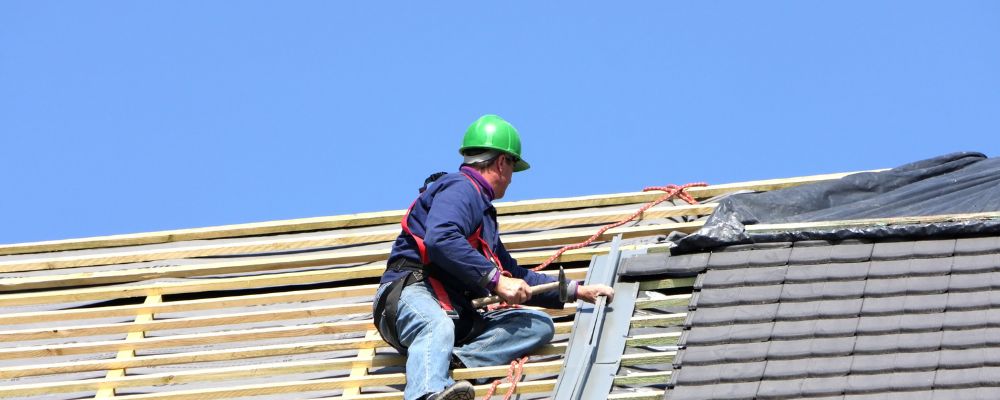
Green hard hats on a construction site serve a special purpose. Often worn by safety inspectors or those new to the environment, such as probationary staff, these hats signify a distinct role in workplace safety. The color green, synonymous with safety and learning, highlights the wearer’s specific responsibilities and level of experience. Ensuring that everyone wears the correct type of hard hat is not just a regulatory detail; it’s a crucial practice for safeguarding all workers on site.
5. Orange Hard Hat

In the dynamic and fast-paced environment of a construction site, the striking orange hard hat is vital for safety and operational efficiency. Primarily worn by lifting operatives, Banks-man slingers/signalers, and traffic marshals, the orange color ensures they stand out, particularly to crane operators. This visibility is critical; without it, crane operators might struggle to perform their tasks safely and effectively.
The choice of bright orange goes beyond mere preference; it’s a strategic decision for safety. It ensures that these operatives are highly visible to everyone on the job site, a crucial factor in preventing accidents. In the bustling activity of construction, where heavy machinery like cranes are in constant use, being unseen can lead to serious, even fatal, consequences. Thus, the orange hard hat is more than just headgear; it’s a key tool in safeguarding lives in this high-stakes workplace.
6. Red Hard Hat
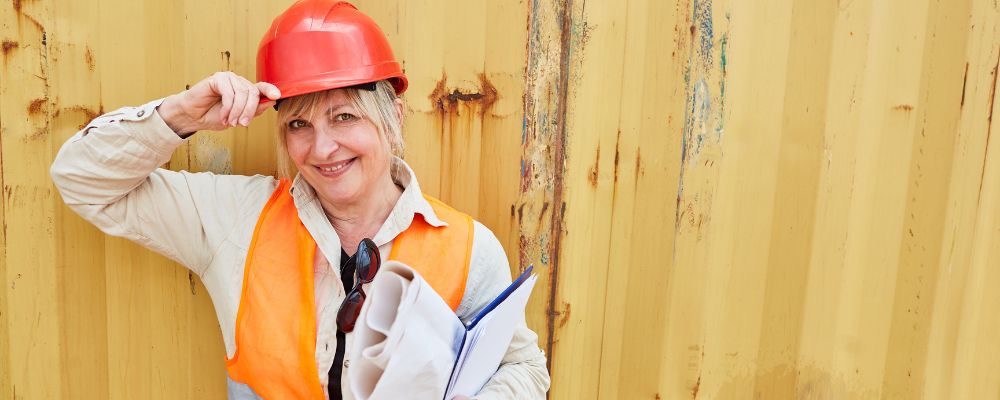
In the high-stakes scenarios of emergency response, the red hard hat emerges as a vital symbol of safety and leadership. Fire marshals don this distinct headgear to ensure they are easily identifiable amidst chaos. Its bright color and the clear “Fire Marshal” stickers make it stand out in crowded and tense situations, allowing for swift and efficient coordination.
By wearing the red hard hat, fire marshals not only make their presence known but also reinforce their pivotal role in managing emergencies. This gear is crucial for guiding people to safety, organizing response efforts, and ensuring that critical rescue operations proceed without confusion. In the realm of emergency response, the red hard hat transcends its physical form to become a symbol of hope and safety, guiding those in peril towards security.
7. Brown Hard Hat
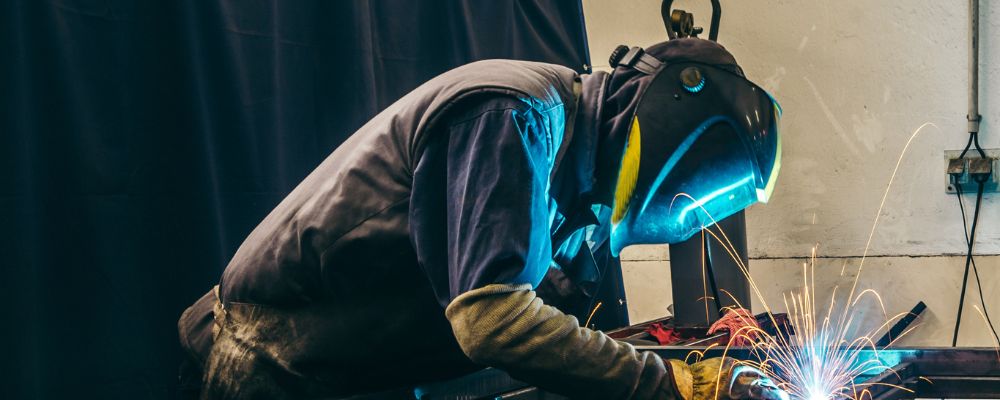
Brown hard hats are completely necessary for safety in the dangerous field of welding. Their hue helps protect eyes from the glare of welding torches and shields welders from sparks and debris. These hats are more than just headgear; they are essential for worker safety in the intense heat and brilliant light of professional welding, protecting workers from the particular risks associated with their occupation.
8. Grey Hard Hat
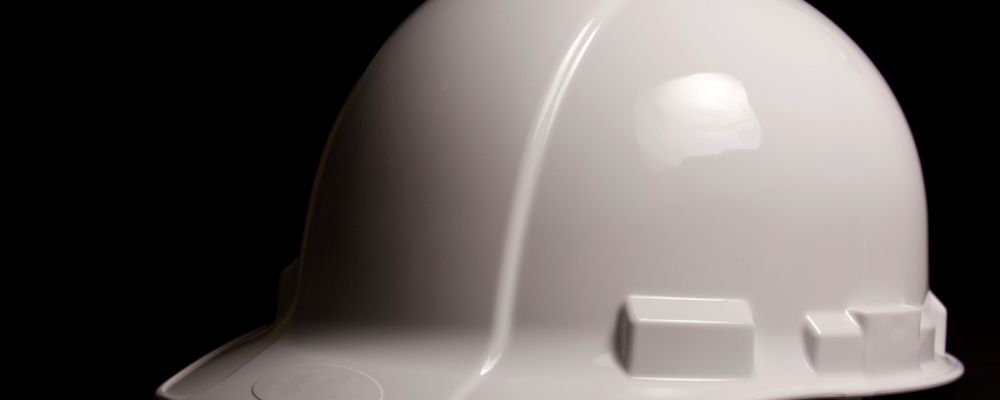
Grey hard hats are typically used by site visitors to indicate their non-operational role, while forgetful employees may find themselves wearing bright pink hats as a humorous yet effective reminder to always have their safety gear on hand.
Purpose Of The Helmet Color Code
For efficiency and safety in manufacturing and construction, helmet color coding is crucial. These colors are essential for improving communication on crowded job sites and rapidly identifying roles; they are not just for show. For instance, site managers are frequently identified by white helmets, whilst new recruits are usually identified by green helmets. In high-risk situations, knowing these codes is essential for preventing mishaps and guaranteeing efficient operations. Here are some of the main purposes of helmet color codes:
- Rapid Role Identification: In busy work environments, it is crucial to be able to quickly identify a person’s role and credentials, which is crucial on busy construction sites.
- Safety and Skill Indicators: To improve safety and guide task assignments, different colors frequently denote different training and experience levels.
- Streamlined Communication: By allowing workers to quickly identify certain skill sets in one another, these visual cues facilitate effective task delegation and emergency response.
- Emergency Response: Color codes make it easier to find safety officers or medical staff in an emergency.
- Training and Compliance: By designating new hires who are undergoing training, colors like green can guarantee that safety procedures are followed.
- Visitor and New Employee Awareness: Visibly distinguishable hat colors assist in directing and supervising visitors and new hires appropriately.
- Management Visibility: Colors such as white or blue are reserved for managers and supervisors, clarifying the chain of command.
Although helmet color codes are commonly used in sectors such as construction, they may differ depending on the company or area. To ensure safety and efficient communication, it’s critical to review the particular policies of each company to determine the appropriate meaning of these colors in your particular situation.
How To Choose A Hard Hat
Selecting the appropriate hard helmet is crucial to guaranteeing enough safety and comfort at work. When selecting a hard helmet, take into account the following factors:
- Kind of hazard: Take into account the kind of hazard you encounter at work. For instance, you could require an electrically rated hard hat if you operate in an environment where there are electrical hazards.
- Material: A variety of materials, including fibreglass, ABS plastic, and high-density polyethene (HDPE), are used to make hard hats. Take into account the content in light of your particular tastes and the demands of your employment.
- Comfort: It’s critical to have a hard helmet that is cosy enough to wear for prolonged periods. Seek for a hard hat with comfortable suspension, ventilation, and straps that can be adjusted.
- Size and fit: Hard helmets are available in a variety of sizes, therefore it’s critical to select the appropriate size for a secure fit. A hard helmet that is too big or too tiny can not offer enough protection and be uncomfortable.
- Style: Hard hats are available in a variety of styles, such as cap and full-brim versions. Think about the look in light of your personal tastes and the demands of your employment.
- Certification: Look for a hard hat certified by the proper safety standards body, such as the American National Standards Institute (ANSI) or the Canadian Standards Association (CSA).
Recall that a hard hat is a crucial item of personal protective equipment (PPE) that needs to be properly chosen to guarantee both comfort and appropriate protection at work.
When Should We Wear A Hard Hat?
A hard hat is a crucial piece of personal protective equipment (PPE) that is used in a variety of industrial environments, including manufacturing facilities, building sites, and mining operations, to shield the head from potential risks. Anytime there is a chance of a head injury from falling objects, electric shock, or other risks, it is crucial to wear a hard hat.
A vital piece of personal protective equipment in a variety of high-risk job settings is the hard hat. They are crucial in circumstances like these:
- Risk of Falling Objects: In locations where there is a chance of objects falling from above, such as building sites or warehouses.
- Low Ceilings and Protruding Objects: When operating in places with risks like low ceilings and protruding beams that provide a risk of head injury.
- Electrical Work: Take precautions to avoid electrical risks when operating electrical machinery or working close to overhead wires.
- Chemical Exposure: In settings where there’s a chance of hazardous exposure, such as chemical plants or laboratories.
- Confined Spaces: Tight spaces where head injuries could result from protruding or sharp items.
Although it’s important, wearing a hard hat isn’t the only precaution to ensure safety. Following safety procedures and using additional PPE that is appropriate for the particular risks associated with your employment and workplace are also crucial.
When To Replace Your Hard Hat
A hard hat is an essential item of personal protective equipment (PPE) that is used to protect the head from potential hazards during work. They may, however, lose their efficacy with time due to deterioration. Watch out for these telltale indicators that your hard hat needs to be replaced:
- Visible Damage: Cracks, dents, or other visible damage compromise protection.
- Faded or Discolored Shell: Discoloration often means prolonged sun exposure, which can weaken the material.
- Suspension System Wear: A worn or damaged suspension system reduces impact absorption.
- Manufacturer’s Recommendations: Adhere to the guidelines provided by the hard hat manufacturer regarding replacement.
- Age of the Hard Hat: Hard hats typically have a lifespan of 2 to 5 years. Check the manufacturing or expiry date to ensure it’s within the recommended timeframe.
To ensure appropriate protection against potential occupational hazards, it’s critical to regularly inspect your hard hat and replace it as needed.
Conclusion
Hard hats are a crucial component of personal protective equipment (PPE) that keeps workers safe in dangerous situations. When it comes to conveying information about a worker’s function, level of experience, and potential hazards, hard hat color codes are essential. Maintaining a safe workplace requires both employers and employees to understand the meaning of each hard hat color code.
Workers can rapidly recognize any hazards, interact with other workers, and guarantee their safety by following these color codes. To prevent accidents and injuries at work, employers must make sure that employees are wearing the proper hard hats, which are color-coded, and that they are receiving the necessary training. We can guarantee that workers come home safely each day by adhering to the hard helmet color regulations.
Please Like Our Facebook Page | Home
